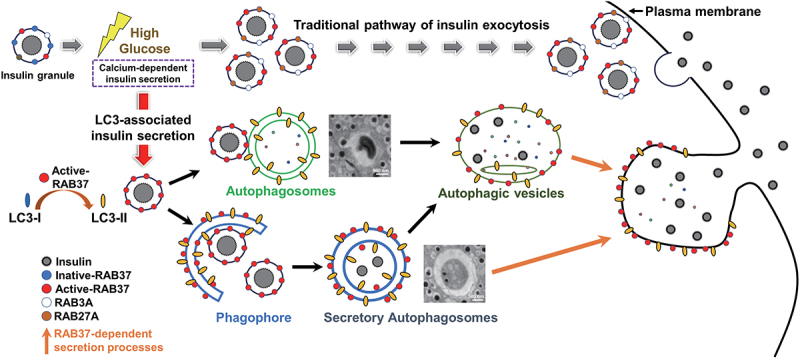Figure 7.

A schematic hypothesis of RAB37-related autophagy promotes insulin secretion in β-cell under high glucose conditions. RAB3A, RAB27A, and RAB37 participate in exocytosis of the traditional insulin secretion under high glucose treatment. Furthermore, RAB37 is also involved in the unconventional insulin secretion through secretory autophagy. High glucose activates RAB37 accompanied by increased autophagic activity in β-cells. We proposed two pathways that autophagy participates in insulin secretion. First, activated-RAB37 interacts with LC3 to promote lipidation of LC3 (LC3-II) followed by recruitment of insulin granule by phagophore expansion to form the mature autophagosome. Second, active RAB37-anchored insulin granules move to autophagosomes followed by fusion. These two pathways provide the possible explanation how RAB37 is anchored on the autophagosome and how insulin is recruited into the autophagosome. Moreover, the trafficking of LC3-anchored insulin vesicles was through a RAB37-dependent secretion process under GSIS. In summary, in addition to the traditional insulin secretion pathway, activated-RAB37, together with increased autophagy, increases insulin exocytosis to maintain glucose homeostasis in the blood.
